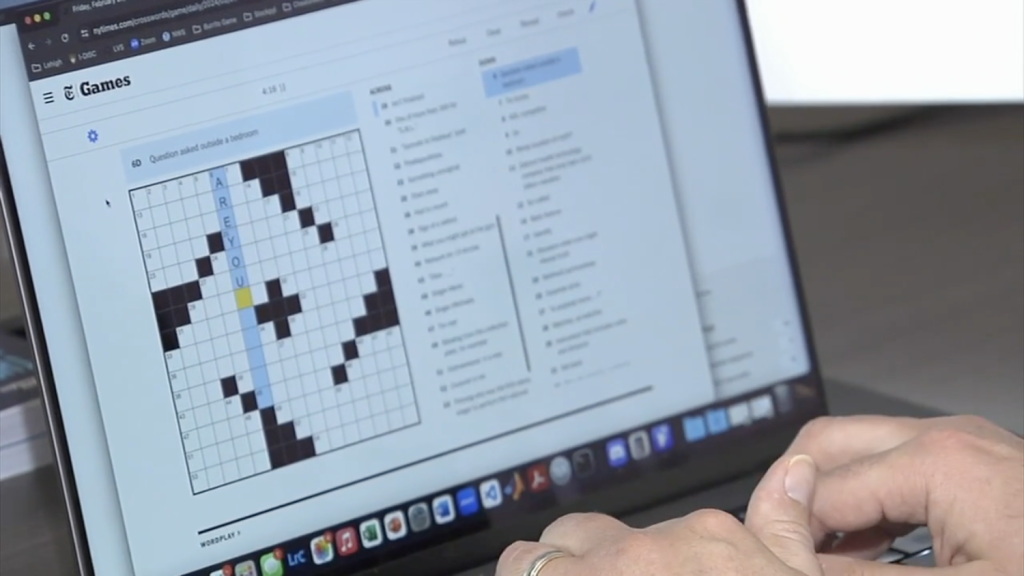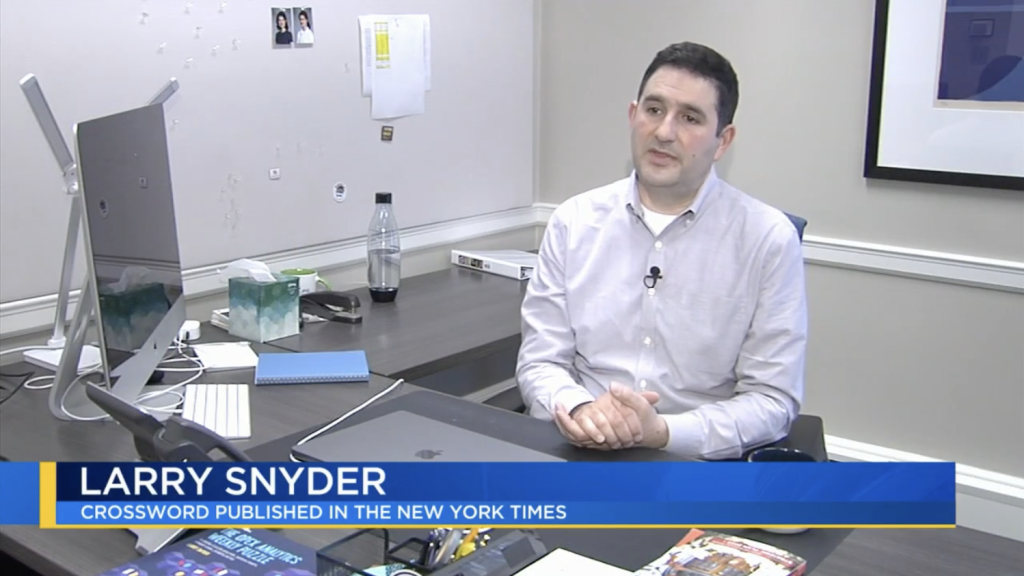
Who Is Larry Snyder?
Larry Snyder is a Harvey E. Wagner Endowed Chair in manufacturing systems engineering in Lehigh. There, he teaches the next generation of engineers and conducts research on supply chain management and energy systems. He is also a beloved student advisor, with many coming to him for guidance on their projects. In fact, he is adored by the whole faculty, who see him as a caring and knowledgeable teacher.
If that wasn’t enough, this family man co-teaches with his wife, Professor Suzanne Edwards, developing a course on Algorithms and Social Justice. In his spare time, when he isn’t making puzzles, he is spending time with his teenage daughters, bird watching, or working on his photography.
While puzzle-solving and creating was just one of many hobbies, he can now consider it a profession. On February 23rd this year, the professor saw his work in print. It includes some of his finest work, including a clever play on words about an ”early number” and ether.
Larry has enjoyed making puzzles at various levels and for different audiences for twenty years now. This casual hobby developed as a way to bring some joy to other people in his life. It grew from his immediate social circle to a wider audience through publication, and now the most famous puzzle section in the world.

From Logic Puzzles To Published Brainteasers
As a child, Larry was really into logic puzzles and word puzzles. For a long time, it was enough to get the satisfaction out of solving the puzzles and understanding how the clues worked. Eventually, as he got older and entered the engineering field, he got more interested in the mechanics of puzzle creation and cluemaking.
It makes sense that someone in this industrial sector would be more fascinated by how it all works and the cause and effect than the gratification of the solutions. He began making puzzles for students in 2003, providing them with a whole new way to learn and look at problems. Later, he found an additional form of employment, working part-time with a start-up consultancy firm. However, the puzzle-solving bug didn’t leave him, and was even encouraged by those around him. His new boss had him create a weekly puzzle for the team to solve. This fun little team-building exercise helped Larry build on his skills, as he brought in new mathematical puzzles, his old favorite logic puzzles, and some crosswords.
The team at the consultancy firm was so impressed with these weekly puzzles that demand grew. Their boss encouraged Larry to take things even further with a whole book of puzzles they could print and give out as Christmas presents. He ended up publishing two books and was completely hooked on puzzle creation. It was still a side venture as he focused on his consultancy and teaching work. Yet, there was undeniable talent there based on the responses of all those who received the books and completed the puzzles. Larry had a knack for constructing the puzzles and their clues to provide something equally fun and challenging.
When the pandemic hit, puzzle solving and puzzle creation became a more important outlet. It was then Larry found himself more interested in crosswords and how they worked. It was also when he got better acquainted with the New York Times game he would later be a part of. He bought a subscription to the games section for ultimate access to all the brainteasers and puzzles he could get his hands on. This was more than a way to pass the time in quarantine and escape from the realities of the pandemic. It was a way to develop his skills and knowledge in puzzle creation.
Creating The Perfect New York Times Puzzle
Before long, he was working on creating his very own crosswords. He soon learned that building a New York Times crossword was the most challenging of them all. There are distinct rules with the New York Times, which means the clues have to be up to standard, the grid has to be perfectly symmetrical, and you can fill in gaps with two-letter words.
These constraints put a lot of crossword designers off because it can take months to build the perfect puzzle from scratch, even with that helpful software. Yet, Larry wasn’t deterred and worked hard to crack the code. His publication in February is one of his greatest achievements. However, since then, he has gone on to be featured in other papers. He’s seen puzzles in the Los Angeles Times, Philadelphia Inquirer, Boston Globe, and, most recently, USA Today.
Inspiring Puzzle Creators Everywhere
Larry’s story shows that there is no reason why amateur puzzle creators can’t dream big and reach their goals. Larry makes the most of crossword-constructions software, something anyone can get into, to create a framework and find suggestions for suitable words. These prompts then help him pick the best options for his theme, or help him come up with something even better.
All the words are hand-picked for a truly unique and personal puzzle. After all, word choice and clue creation are where every creator gets to add their personal signature to their work. Some of the common themes that you will find in a Larry Snyder puzzle are mathematical and scientific, playing on his primary profession. He also works with food and movie themes. To go from these humble beginnings to the pages of respected publications shows that anyone can do this with the right level of talent, dedication, and enjoyment.
Remarkably, even with this crowning achievement, Larry still sees puzzle creation as a hobby. It is still a secondary creative outlet besides his academic work. Obviously, his work with his students at Lehigh is a priority, but hopefully, there will always be room for more puzzles.